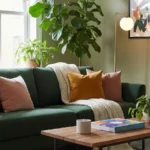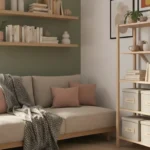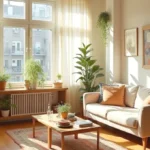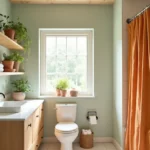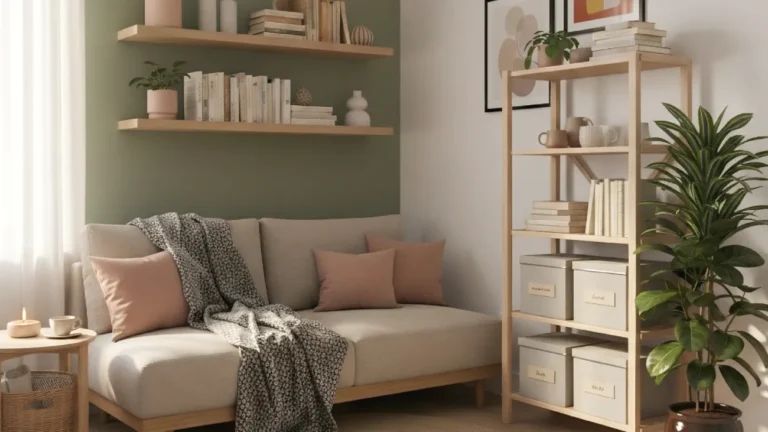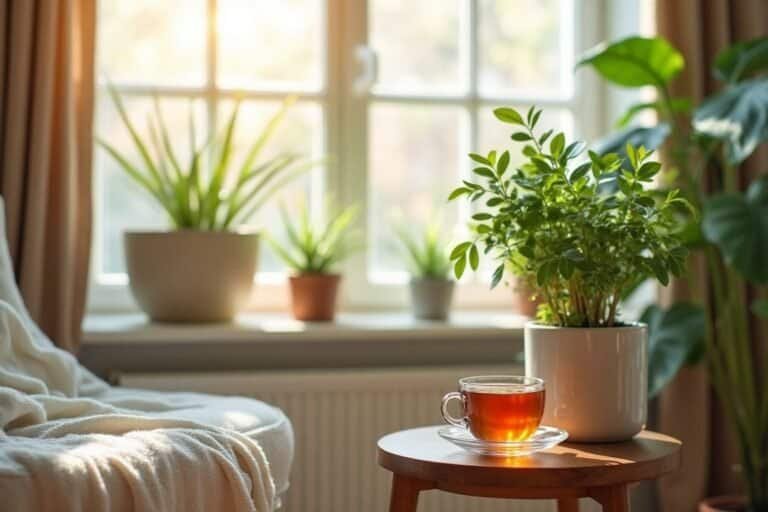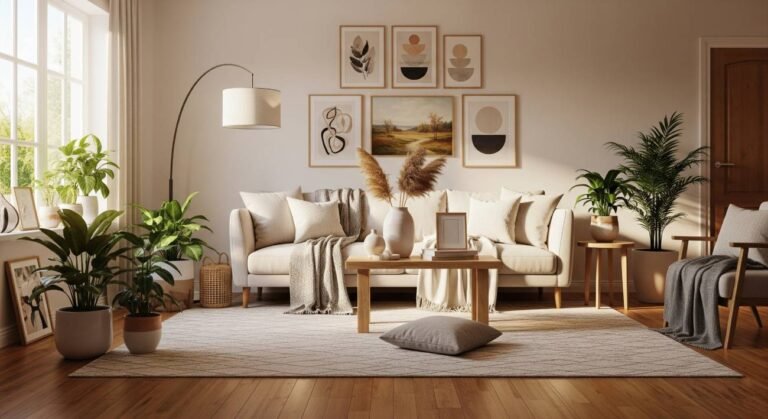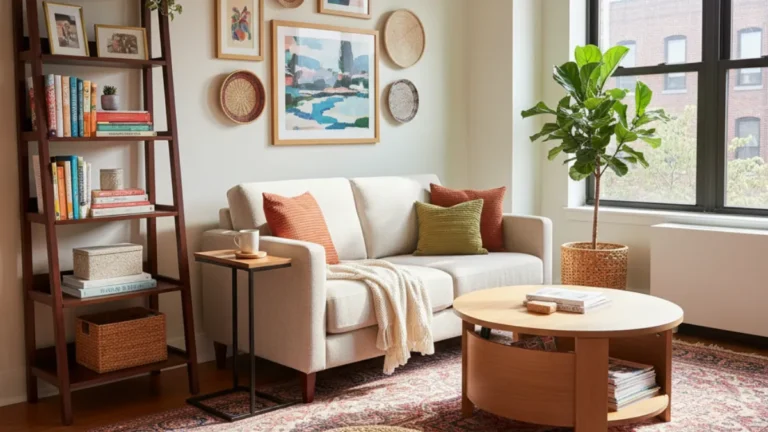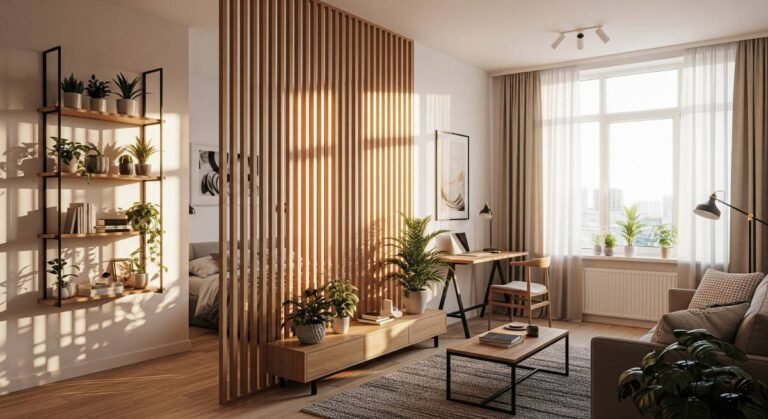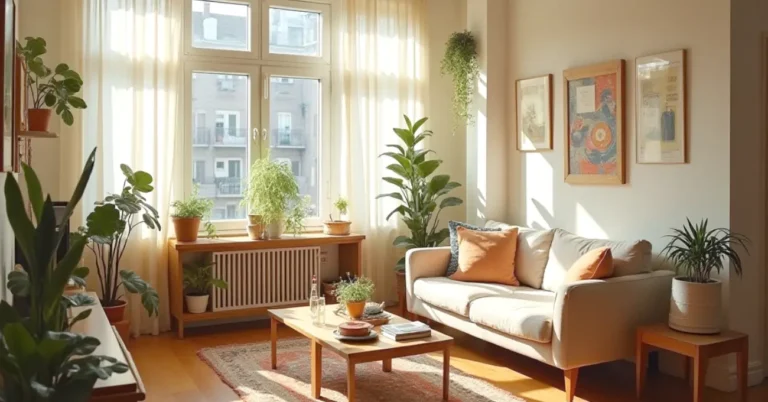Declutter Your Home, Declutter Your Mind: The Ultimate Guide to Getting Started
Have you ever felt paralyzed by the clutter in your home? You want to start, but you just don’t know how. You look around and think, “Where on earth does one even begin with all of this?” You’re not alone. Millions of people worldwide face this exact feeling of overwhelm. In this article, I’m sharing an exhaustive, honest, and realistic guide on how to declutter your home, blending practical tips with personal experiences (spoiler: yes, I’ve been there too!), useful products, and a downloadable resource that can truly change your life. Get ready to transform your space and your well-being.

How to Declutter Your Home: Start When Overwhelmed
The first thing you need to know is that feeling overwhelmed is completely normal. Clutter can be emotional, not just physical. In fact, often it’s not that we don’t want to organize; it’s that we don’t know what to do with our belongings. We wonder if we should throw them away, sell them, or if they might one day be “useful.” That mental block is the first obstacle to overcome, and it’s precisely where we’ll begin.

In my case, categorizing things has always been a personal challenge. I have so many tools, accumulated documents, clothes that I “might wear someday”… and I struggle to find a fixed place for them or simply let them go. I see other homes that look like they’re straight out of a magazine, always impeccably organized, and I wonder how they do it. As an artist and someone who appreciates creative freedom, I sometimes feel that a certain level of chaos is part of my process, but I also recognize the profound need for order for mental peace. The truth is, if you don’t know where to start, the best advice is simple: begin with the smallest thing, a micro-space: a single drawer, a shelf, or even just one box. Small victories build massive transformations.
Key Tip for Getting Started Use the “single drawer” method: Dedicate just 15 minutes to organizing one single drawer. Take everything out, select what you truly use and love, clean the drawer, and reorganize with intention. This small exercise not only gives you a quick, tangible win but also activates your brain, showing you that the process is manageable and rewarding. It’s a true baby step that generates powerful momentum.

Quick & Effective Techniques: How to Declutter Your Home Fast (Without Losing Your Mind!)
Sometimes, you just need results now. Whether guests are coming over, you’re at your wit’s end with the chaos, or you simply want to reclaim your space immediately. If this sounds like you, these techniques can help you make a visible impact in a short amount of time, without feeling overwhelmed by a monumental task:

The 12-12-12 Method
A popul ar technique popularized by minimalist Joshua Becker of Becoming Minimalist. The idea is simple: find 12 things to throw away, 12 to donate, and 12 to relocate. It’s a 36-item challenge that forces you to make quick decisions and see instant progress. You can repeat this multiple times a day.

5-Minute Express Declutter
Choose a specific, high-visibility area, like your kitchen counters, nightstand, or desk, and get rid of anything unnecessary in just five minutes. Don’t overthink it, just act. The speed prevents procrastination.

The Race Against the Clock (or “Cleaning Sprint”)
Set a timer for 10 minutes and challenge yourself to organize as much as possible within that limited time. Focus on just one space or category. It’s surprising what you can achieve under pressure and how this “gamification” makes the task less tedious.
These methods are ideal if you’re looking for how to declutter your home fast and are perfect for maintaining momentum, creating small pockets of order amidst the chaos.
Looking for more inspiration?
Small Living Room Layouts That Wow
Maximize your space without sacrificing style
Discover layouts that make your living room feel larger, organized, and cozy.
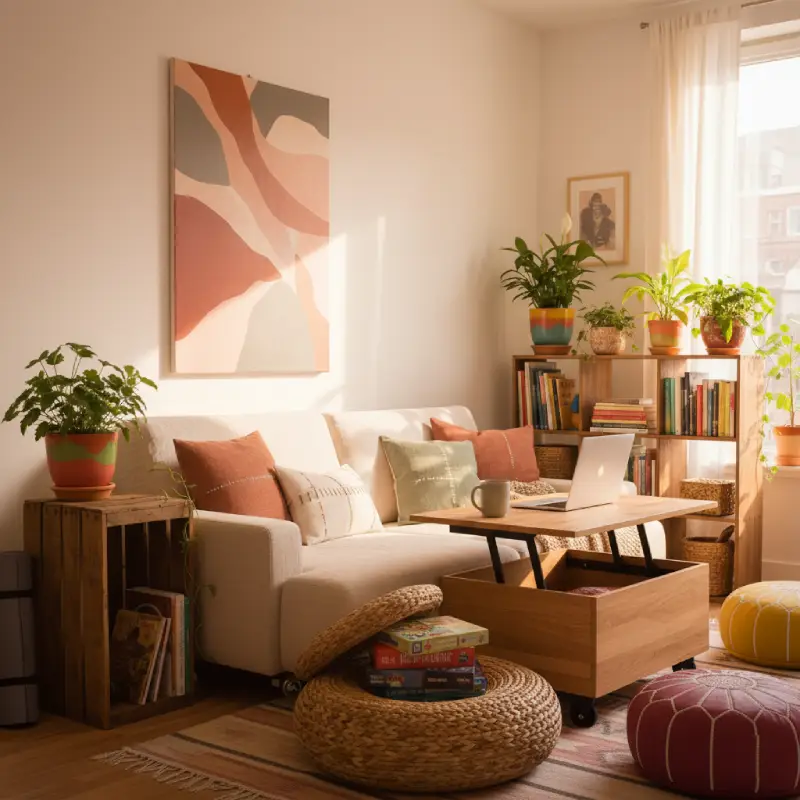
Room-by-Room Method: Structured Decluttering for Every Space
One of the most common and frustrating mistakes is trying to organize everything at once. It’s like trying to empty the ocean with a spoon. The key is to tackle one room at a time, and within that room, one category at a time. This prevents you from feeling overwhelmed and allows you to celebrate each achievement.

1. Bedroom: Your Personal Sanctuary
This is often where the biggest battle begins: clothes. In my experience, this is the hardest type of clutter to tackle, because garments often carry emotional weight (memories, hopes, identity). I always have that pile of clothes I’m unsure whether to keep, donate, or finally wear. An infallible and very popular trick to know what to keep is the “reverse hanger trick”: hang all your clothes with the hangers facing you (backwards). Every time you wear an item, hang it back with the hanger facing the normal direction. After 3 or 6 months (you decide the timeframe), any items still on backward hangers… probably need to go. It’s a clear signal you’re not actively using them.

2. Kitchen: The Heart of the Home
The kitchen can accumulate clutter very quickly, from duplicate utensils to empty food containers. The first rule here is to eliminate duplicates. Do you really need 5 identical spatulas or 10 promotional mugs? Your counters should be as clear as possible to facilitate cleaning and functionality. Use vertical organizers for baking sheets and cutting boards, and drawer dividers for keeping cutlery and utensils in place. Think about efficient storage solutions, like OXO airtight containers that not only organize your pantry but also keep food fresh and free up visual space. Or magnetic knife strips that free up precious drawer space.

3. Wardrobe or Closet: Organize Your Daily Wear
After clothes, closets are often a battlefield. The strategy here is to sort by season and be brutally honest: consider donating anything you haven’t worn in over a year. If you haven’t used it in the last four seasons, it’s likely you don’t need it. Invest in slim, uniform hangers to maximize space, and use hanging organizers for bags, belts, or shoes. An organized closet saves you time and stress every morning.

4. Papers and Documents: Less Paper, More Peace
Paper clutter is a silent type of chaos that can accumulate without you realizing it, generating stress and making it difficult to find important things. The key is to digitize important documents (scan invoices, warranties, less critical papers) and have a clear system for the rest. Use clearly labeled boxes for legal, medical, and school documents, and have a compact, quiet paper shredder nearby for sensitive papers. I used to have mountains of papers all over my house, which caused me a lot of anxiety. Since I implemented a categorized digital and physical filing system, everything flows much better, and I feel significantly lighter.
What to Do With Your Stuff: Toss, Donate, Sell, or Recycle (A Practical Guide)
Here comes the big dilemma after decluttering: what do I do with all this stuff I no longer need? Making the right decision for each item is as important as the decluttering process itself.

- Toss anything broken, expired, or beyond repair/use. This includes expired medicines, clothes with irreparable holes, or gadgets that simply don’t work. No attachment is worth keeping truly unusable items.
- Donate what’s still in good condition but you don’t use. Think about local charities, shelters, or even friends and family who might give it a second life. Make sure items are clean and in good, usable condition.
- Sell items that have value: well-preserved books, electronics, designer clothing, or furniture. Platforms like eBay, Facebook Marketplace, Vinted, or specialized second-hand stores are excellent options. This way, you can recoup some of your investment and reduce waste!
- Recycle everything you can: batteries, electronics, cardboard, plastic, glass. Research specific recycling points in your community. This is crucial for a conscious and sustainable home.
At home, we’ve adopted the golden rule: “if something new comes in, something old must go out.” This rule, popularized in many organizing circles, works incredibly well to prevent accumulation, especially if you live in small spaces where every item tells its own story and occupies valuable physical and mental real estate. It’s a constant filter that keeps you in control.
Inspired by what you read?
Pastel Interior Designs for 2025
Bring calm and style to any room
Get inspired by the latest pastel color trends and create serene, stylish spaces.

How to Organize Clutter: Recommended Tools, Bins, and Systems
Once you’ve done the decluttering, organizing is a whole other world. And this is where many of us falter because, even with good intentions, we lack a clear system tailored to our lifestyle.
In my case, the challenge has always been maintaining order in the long term. I lacked clear models, simple routines that could become habits. As my grandmother used to say: “A place for everything, and everything in its place.” That phrase haunts (and helps) me daily. It’s not about perfection, but about functionality.

Practical solutions for lasting organization:
- Use labeled boxes and containers by category (office supplies, important documents, electronic cables, tools, etc.). Knowing where everything goes instantly reduces visual and mental clutter. You can find economical and versatile options at stores like IKEA (the SAMLA or KUGGIS series), The Container Store, or Muji, which are not only functional but also aesthetically pleasing.
- Implement weekly or daily routines for tidying up. It doesn’t have to be a deep clean. Dedicate 10-15 minutes each evening to return items to their designated spots. This prevents clutter from accumulating.
- Assign clear “zones” within a room for specific types of items. For example, a reading nook with a small bookshelf, an electronics charging station, or a “launchpad zone” near the door for keys and bags.
- Invest in storage solutions that maximize vertical space: tall shelving units, over-the-door organizers, or stackable baskets. Every inch counts in a home.

How to Maintain Order Over Time (Even If You’re Creative and Chaotic)
This is where the emotional part comes in, and often the most challenging aspect for many, especially creative minds who sometimes see order as a limitation. As an artist, I feel that a certain level of controlled chaos can fuel creativity, but if everything is chaos, you drown in it and it paralyzes your flow. In my home, we’ve learned that order shouldn’t be an unattainable aesthetic goal, but a tool for mental peace, functionality, and fluidity in daily life.

Some simple rules that have worked for us for long-term maintenance:
- Monthly area review: Dedicate one day a month to reviewing a specific room or category, doing a mini-declutter and readjustment. This prevents clutter from building up again.
- The “one in, one out” rule: Already mentioned, but fundamental for maintenance. If you buy something new, something similar must leave.
- “Transition zone” for items you’re still unsure about: If you’re doubtful about an item, don’t just leave it anywhere. Designate a box or a corner for “to be decided” items. Put a review date on it (e.g., in 30 days). If you haven’t needed it by then, it’s likely it can go.
- Make it part of your daily routine, not a separate task: Put things away immediately after using them. A minute of order now saves you an hour of chaos later.
Emotional Decluttering: When Attachment to Objects Prevents You From Letting Go
Much of the clutter isn’t about physical things; it’s about deep emotions. We keep objects out of fear (of needing it later), guilt (over money spent), nostalgia (for the past), or even external pressure. Does that sound familiar? This is the core of emotional decluttering and often the biggest hurdle to how to declutter your home permanently.
Tips for emotionally letting go and making choices easier:

Take photos of what you struggle to part with
If an item has immense sentimental value but takes up too much space, a high-quality photo can be enough to preserve the memory without the physical bulk.

Evaluate an Item’s Current Purpose
Ask yourself honestly: “Will I use or need this in the next 3 months? Does it bring me joy or serve an essential function TODAY?” Use the 90/90 Rule (popularized by The Minimalists): Have I used it in the last 90 days? Will I use it in the next 90 days? If the answer is no to both, it’s time to consider letting go.

Imagine someone else using it and giving it new life
Visualizing how your item can be useful and happy in someone else’s hands (through donation or sale) can ease the guilt of letting it go.

Start with the easy stuff
Don’t tackle the most sentimental items first. Gain confidence and decision-making “muscle” with low-attachment items (old clothes, useless papers) before moving on to objects with a heavier emotional load.

Create a “memory box”
Allow yourself one designated box for your most treasured memories. Don’t let nostalgia spread throughout the entire house.
Accessories and Products That Make Decluttering Easier
While decluttering is primarily a mental and decision-making exercise, having the right tools can make the process much more efficient and rewarding. These are some basics that make a big difference:
- Durable bags for donation/trash: Have large, strong bags ready from the start. You’ll be surprised how much stuff will leave. Consider heavy-duty industrial bags or IKEA’s large blue bags.
- Foldable or clear temporary storage bins: Useful for your “maybe box” or for grouping items before their final destination. Fabric containers with lids are aesthetic and practical.
- Paper shredder: Essential for safely disposing of sensitive documents.
- Labels and markers: To categorize and maintain order once you’ve decided what to keep and where to store it. Waterproof labels are durable and reusable.
- A timer: Any kitchen timer or your phone’s timer is perfect for applying the 5, 10, or 15-minute techniques.
- Gloves and basic cleaning supplies: Don’t forget to clean the space after you declutter! A clean space feels even more organized.
You can also create your own personal “decluttering kit”: gloves, trash/donation bags, labels, a damp cloth, and your favorite timer. Having everything ready eliminates excuses and allows you to start immediately.
Conclusion: A Decluttered Home, A Serene Mind

Clutter can feel like an insurmountable mountain, but it doesn’t have to be. Decluttering your home isn’t just a physical task; it’s a profound act of self-care, of making space for mental peace and clarity. I learned this the hard way: ignoring chaos only leads to more stress and a feeling of paralysis. But with a strategic plan, consistent small actions, and the right mindset, you can transform your space long-term.
Remember: your home should be a sanctuary, a place that nurtures and inspires you, not one that overwhelms you. Every item you remove is a weight lifted. Every corner you organize is a breath of fresh air for your mind. You are on the right path to creating that InnerGlowHome you deserve!
Explore Our Favorite Tools & Your Next Step Towards an Organized Home:
Ready to take your home organization to the next level? Discover our curated selection of products and systems we love and use, designed to make your life easier and your space more functional:
- [Durable and Reusable Storage Bags – Amazon]: For donations and large items.
- [OXO Airtight Food Storage Container Set for Pantry – Amazon]: Keep your food fresh and pantry tidy.
- [Reusable Waterproof Label Set – Amazon]: Categorize everything with style and clarity.
- [Compact Home Paper Shredder – Amazon]: Safely dispose of sensitive documents.
- [Extendable Drawer Organizers for Utensils – Amazon]: Give every piece of cutlery and tool its place.
- [Ultra-Thin Non-Slip Hangers – Amazon]: Maximize space in your closet.
- [IKEA KALLAX Shelving Units with Open Storage – IKEA]: Versatile solutions for every corner.
Articles you might enjoy
- Good Quality Cheap Furniture: Your Essential Guide to Styling, Durable, and Regret-Free Furnishing
- Say Goodbye to Clutter: The Best Storage Ideas for Small Apartments and Organized Living
- Smart Furniture for Small Spaces: Your Guide to Space-Saving, Multi-Functional Pieces
- Expert Design for Small Living Rooms: The Best Layout Ideas for Your Functional Home
- Dream Bathroom, Budget Price: Your Guide to Bathroom Remodel Ideas on a Budget (With All Your Soul!)
Table of Contents
Say Goodbye to Clutter: The Best Storage Ideas for Small Apartments and Organized Living
Say Goodbye to Clutter: The Best Storage Ideas for Small Apartments and Organized Living Living in a small apartment—or even a spacious one that feels perpetually unmanageable—can be a daily source of frustration. It’s not merely about square footage; it’s about how efficiently every inch is utilized. I experienced this firsthand: despite living in a…
Low Light Indoor Plants: Green in Every Corner of Your Home!
Struggling with low natural light at home? This guide uncovers the best low light indoor plants that flourish even without direct sun. From tall options for dim corners to ideal bathroom plants no light, find the perfect green companions. Download your free guide for thriving houseplants!
Affordable Home Decor: Master the Art of a Luxurious Look on a Budget
Want a high-end look without the high-end price tag? Discover the secrets to affordable luxury decor. This guide shows you designer tricks and where to find budget-friendly pieces to create a stylish home that truly looks expensive, without breaking the bank.

